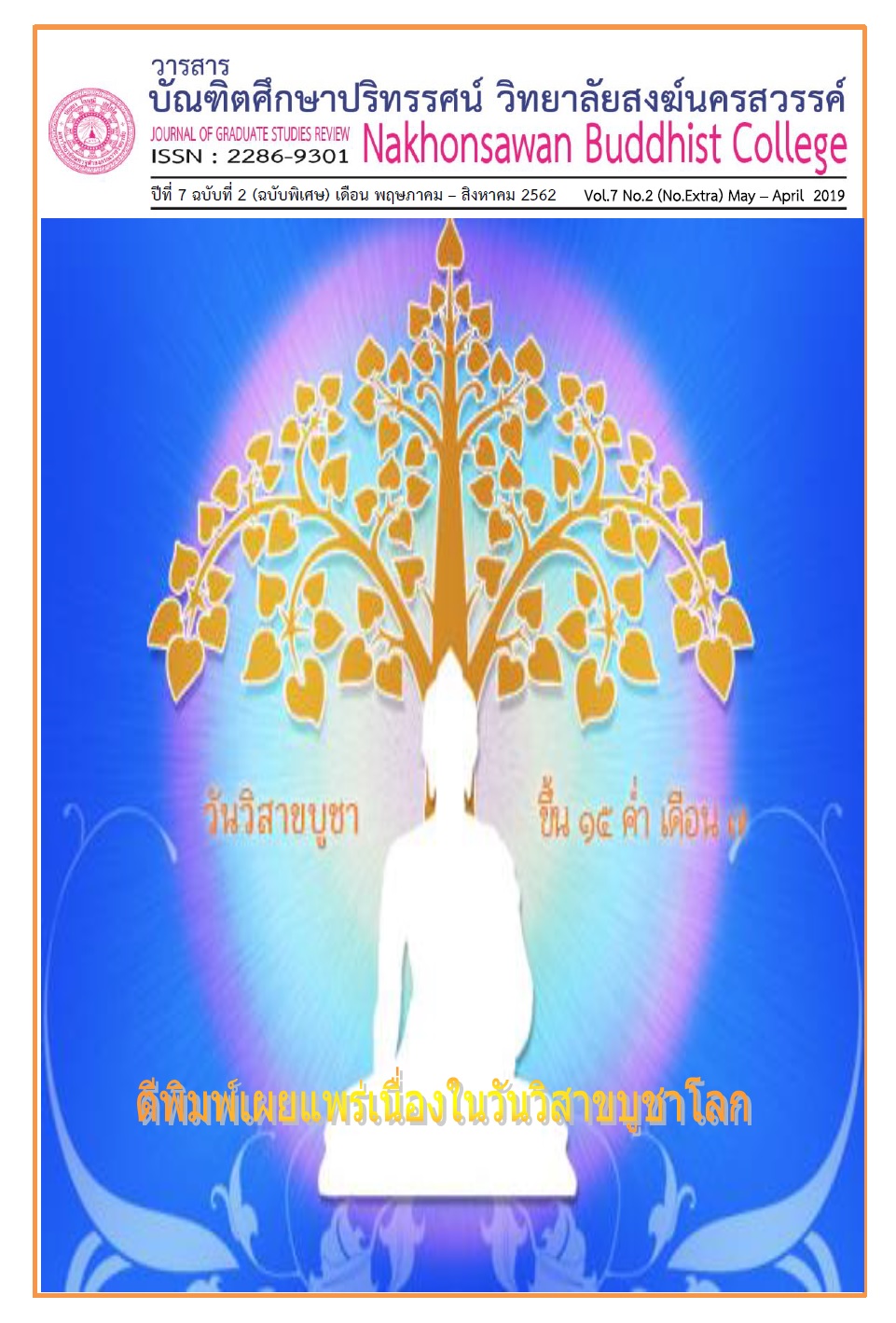The Models of Knowledge Management According to Dutiyapapanika Suttra For the Community Rice Mills in Nakhon Sawan Province
Main Article Content
Abstract
This research had 3 objectives: 1) to study the state of knowledge management for the community rice mills in NahonSawan Province 2) to build the models of knowledge management according to Dutiyapapanika Sutta for the community rice mills in Nakhon Sawan Province and 3) to evaluate the models of knowledge management according to Dutiyapapanika Sutta for the community rice mills in Nakhon Sawan Province.
This research were divided into 3 steps: 1) to study the state of knowledge management for the community rice mills in Nakhon Sawan Province, it was done by 19 informants using semi-structure interviews and content analysis, 2) to build the models of knowledge management according to Dutiyapapanka Sutta for the community rice mills in Nakhon Sawan Province it was done by 10 experts using the focus group discussion. The tool was the focus group discussion forms and content analysis and 3) to evaluate the models of knowledge management according to Dutiyapapanika Sutta for the community rice mills in Nakhon Sawan Province, it was done by 30 experts which were the managers of the community rice mills and the executives as well. The tool used for this step was the evaluation forms of the models asking 4 appropriateness: 1. Accuracy, 2. Suitability, 3. Feasibility in practicing and 4. Benefits. Statistics used in this research were mean and standard deviation.
The results revealed as the following:
- The results of studying the state of knowledge management for the community rice mills in Nakhon Sawan Province, it showed that most of the community rice mills could not provide the service of rice husking for the people because they lack of the knowledge management of the rice mills, they had no knowledge to check about the paddy species, they had no knowledge on managing the process of rice husking to be good efficiency, they did not know about the production cost, marketing, how to provide the services and also they lack of some important equipments using in rice husking such as the rice destoner maching to separate some stones from the rice, permanaet magnet for picking up some scraps and iron powder from the rice.
- Building the models of khowledge management according to DutiyapapanikaSutta for the community rice mills in Nakhon Sawan Province, it reweale that the researcher had brought the principle of Dutiyapapanika Sutta to apply and integrate with the process of knowledge management to build the models. The Butiyapapanika Sutta were: 1) Cakkhuma (Conceptual Skill), 2) Vidhuro (Technical Skill),and 3) Nissayasampanno (Human Relation Skill). The 7 steps of the process of knowledge management were: 1. Knowledge identification, 2. Creation and acquisition of knowlege, 3. Knowledge organization, 4 knowledge codification and refinement, 5. Knowledge access, 6. Knowledge sharing and 7. Learning. All mentioned above could be brought together to build the models of knowledge management according toDutiyapapanika Sutta for the community rice mills in NaknowSawan province to meet the success.
- The resuts of evaluation the models of knowledge management according to Dutiyapapanika Sutta for the community rice mills in Nakhon SawanProvince, it disclosed that the 4 appropriateness: accuracy, suitability, feasibility in practicing and benefits and the 7 steps of the process of knowledge management were found in average at the highest levels.


